These days, Darsa’s “Dastan Zar” collection is being unveiled and has attracted the attention of many supporters and opponents. On Monday, November 14, 1403, Komed magazine tried to present the criticisms of this campaign and bring the response of Dersa brand to the audience by holding a webinar in which the art director of Dersa brand was also present. A goal that was not fully realized in the 1.5 hours of this conversation. In the following, we report on this webinar and express the unsaid points, and we suggest that you follow this dynamic and challenging conversation on the Youtube of the closet magazine.
The process of creating a product and a story
The first question from Dersa’s art director was about the process of forming the campaign and its relationship with the products. Elika Shahvardi, Art Director of Darsa Brands, expressed her satisfaction that the Dastan Zar campaign received different feedback from the beginning of its journey and before the official unveiling of the products of this campaign, and elaborated on “Dastan Zar”. He said that after the rebranding, Darsa tried to focus on the rich Iranian culture and make the roots and deep layers of Iranian culture the basis of creative activities. He pointed to Dersa’s previous campaigns such as Nowruz, Yeldal and cooperation with Arin Hakimi, all of which were related to Iranian culture, rituals and art. In this regard, the Dersa team, accompanied by Shahin Fatemi, the creative director, and Soheila Fethiye, the design director of Dersa, two years ago, He traveled to the south of Iran and found the story of Zar, a story rooted in the hearts of the people of this region. They spent a week to ten days in Hormozgan with the native people and found Zar to be the most fascinating, mysterious and unexplored ritual of this region. He continued: “The story of Zar refers to the cultural acceptance of Iranians because Zar is not very old in Iran. In terms of its geographical location and location on the Silk Road, Iran has always hosted and accepted different cultures, but created its own interpretation of that culture. Zar is also present in other parts of Iran, such as the northwest, Sistan and Baluchistan, and also the east of Iran.
He added that the ritual of Zar is rooted in climate and geography. He mentioned the winds that blow in the hollows of the Valley of the Stars and produce strange sounds. All of these were inspirations that Darsa used in an exploratory style.
“In the beginning, the product was created, and it took two years to transform the idea into a product. In the design of the product, sources of physical inspiration were used in the environment and feeling of Ayanzar. The product was a new product due to its special category and inspiration from the gaps in the valley of stars and gorges. Different women’s and men’s products were inspired by these items. Because there are male and female roles in the Zar ritual and the winds are divided into male and female. With the consultation of the native people, it was decided to abandon the modern and futuristic readings and not add anything to the original story due to the richness of this ritual. In this way, Darsa tried to introduce the audience to the people, the climate and the region, then to explain the reason for the Zar ritual and finally to introduce the products. It was also decided that the campaign photography should be done in a way that shows the people of the region and their life and their relationship with the environment. Let’s see Zar as a concept that people carry with them. Zar was solved in the campaign images in the field. In the design of the products, the slab line is combined with the front lines of the barge and the stars of the valley of stars are designed with Swarovski crystals. The bag category is inspired by the rocks. Dersa first designed the products and then prepared the Zar campaign as a marketing campaign for the product launch.



With the unveiling of the products of this collection and taking inspiration from the form of the valley of stars and the nose of the lances that Darsa mentioned, a form of inconsistency between the Zar story campaign and the Zar collection can be seen, which in some cases is very general to the entire southern region and in other cases Very little refers to a part of Hormozgan province. Elika Shahvardi, the artistic director of Darsa brands, in the webinar of Kamad magazine, explaining the inspiration from the nose of Lange and the Valley of the Stars in Zar Collection products, pointed out that the Valley of the Stars is the abode of the winds and Ayanzar entered this land through the sea and the barge. This is while the narrative of “Zar Story” focuses on the Zar ritual rather than dealing with the whole climate, people’s life, sea and boats. The connection between the product design and the narrative seems to be weak in this regard, and the Fermi collection references play a weak role in the narrative.
In addition, the simplicity of the forms and the use of lines and dots make it possible for different narratives to be adapted to the products of this collection. The use of Swarovski crystals in the same form and with the same dimensions was also found in other collections with other narratives, and as much as they signify the night sky of the valley of stars, for example, they also signify the pebbles of the path to the Alamut Castle – as in the collection of Darsa Jawahar Alamut This interpretation is seen-. In fact, the use of very simple forms without specific reference to elements of Zar rituals makes it possible for other narratives to be based on this collection. This issue does not negate the use of simple forms, but changes can be made in simple forms according to the subject that are specific to a narrative. The products in their design do not have a special reference to Zar and do not create a precise connection with the name of the campaign.
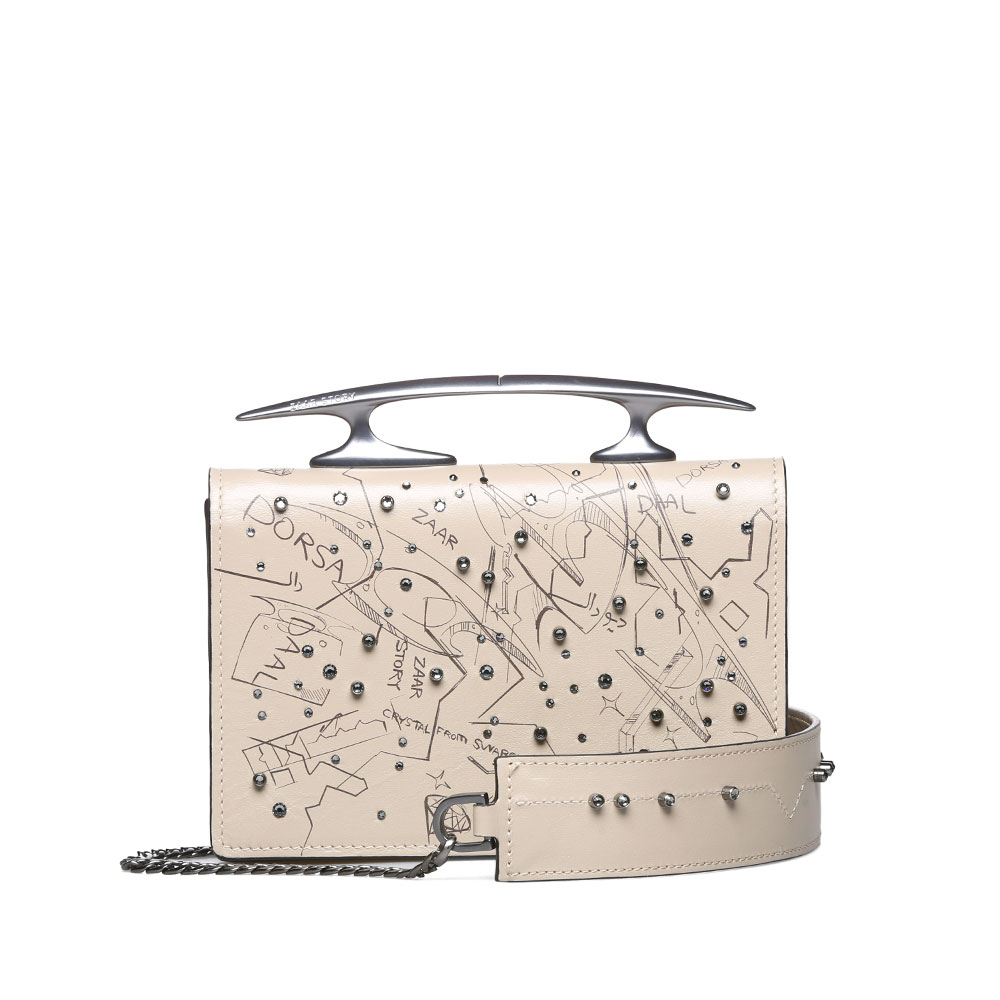

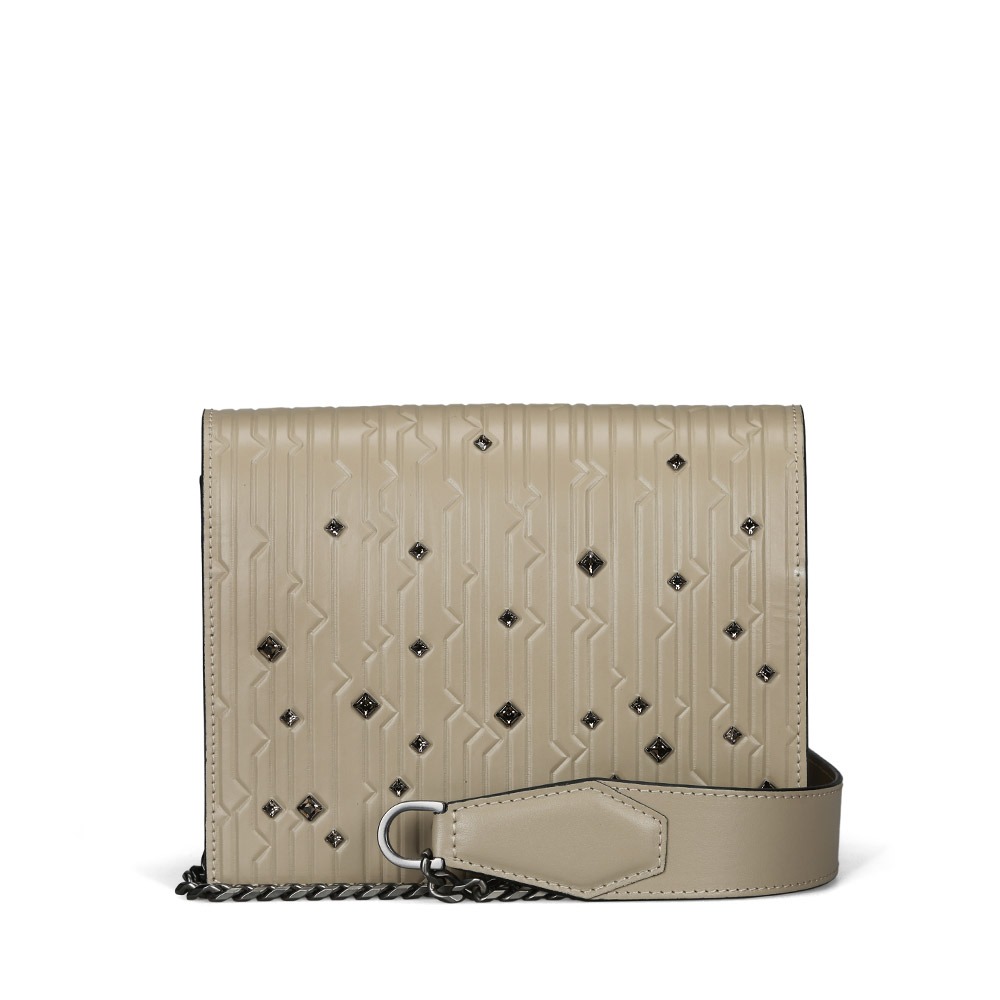

Darsa’s art director stated that part of the campaign has not been unveiled yet, and pointed out the connection between the campaign and the sources of inspiration for the products and said: “We started with images of Hormozgan and people by the sea, and in the last week of this one-month campaign, we reached the sequence of design and We will focus on the final product.
A romantic narrative of Ayanzar
Citing research sources about the zar ceremony and even citing the narratives of the Orsi podcast – whose episodes about the zar ceremony were sponsored by Dersa – this ceremony and the whole of this event is a terrifying and eerie event. Because of the connection with supernatural and unknown beings. And human’s entanglement and conflict with these creatures creates a state of terror and fear in people towards the person who is afflicted. This ritual, which is considered a form of treatment, occurs when a person with a sore has despaired of healing at the hands of doctors. Darsa has presented a romantic and romantic narrative of this ritual, which further shows the break of the campaign from the principle of the Zar ceremony. The eerieness of this ritual is a part of it that is not discussed in Darsa’s narrative. Looking at this ritual, Darsa’s narration and Zar’s collection products, the audience sees a puzzle with several pieces that do not fit together.
Elika Shahvardi, artistic director of Dersa, pointed out in response to this issue: “The deconstructive design of rings and earrings and the sharp handle of the bags refer to the climate, which is the birth center of this ritual. This climate is not separated from children’s laughter, celebrations, rhythmic music and mysterious atmosphere. Zar’s attraction for Darsa was that in our love stories, this is the only place where the lover demands something from the beloved. Because Zar has a request from the person who fell in love with him. What drew the attention of Darsa designers in the first place was this contrast; Happy people who have always experienced a difficult life biologically. In a series of sources, it is stated that Zar chooses a human being and does not ride any compound. Sometimes the winds fall in love with the opposite sex so much that they no longer allow her to marry. He chooses his compound and may not allow anyone to approach it again. Some people like to have Zar because of receiving power from Zar.
If we ignore the meaning of this choice as love, the question is still raised that choosing only one specific aspect of a religion to what extent can help the audience to know about that religion? Isn’t making a romantic narrative of a ceremony that is an eerie event for the audience, the natives of the region (during a conversation with several of them) and the conducted researches, a form of manipulation of this cultural event? If Darsa states that its mission in this campaign is to inform the audience about the native culture of Hormozgan, how does it tell the story only from a limited perspective? Darsa emphasizes the “story” of Zar as a story, a story that is told with tenderness far from the image of Zar in people’s minds. But cultural rituals are not stories. These rituals have cultural values that such manipulations may have a negative impact on in the long run.
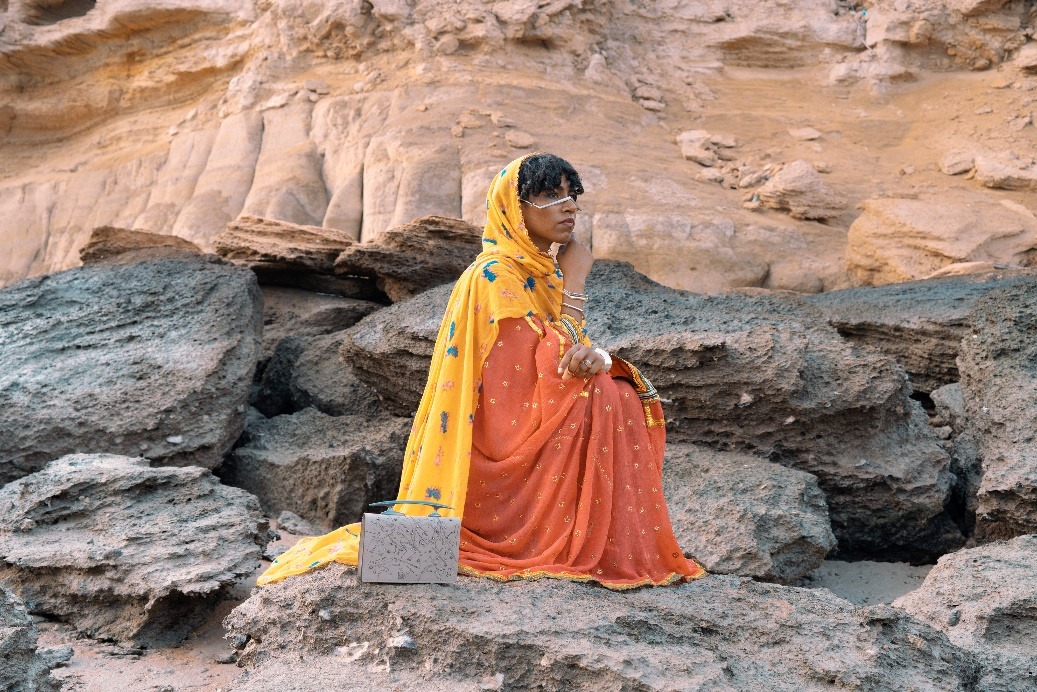

Cultural appropriation or cultural appropriation
For several years, cultural appropriation has become a frequent topic in various fields of fashion, from academia to design. There are various examples of cultural appropriation among different brands that have attracted the attention of academics and industry activists. But what does cultural appropriation mean?
In the book cultural appropriation in fashion and entertainment, Yunya Kawamura defines cultural appropriation in the words of the Oxford dictionary as follows: “Inappropriate or unaware adoption of beliefs, customs, customs, etc. related to a group of people or society by people from a group or society. More influential and dominant.”
In many definitions of cultural appropriation, it refers to the adoption of a smaller culture that is in the minority by the dominant and dominant culture. Cultural appropriation occurs when people from outside a culture interfere with rituals and customs within a culture that is usually on the fringes without substantial reciprocity, permission, or compensation.
The limited reading chosen by Darsa from Ayan Zar increases the proximity of this campaign to the discussion of cultural appropriation. In response to this issue, Elika Shahvardi said: “For Darsa as a brand whose ultimate goal is to create a product and create a story line, it is enough for the audience to search about the topic; Because Dersa is not going to provide all the information to the audience with one campaign. Darsa has involved various channels in this awareness, such as cooperation with Orsi podcast. Therefore, for a marketing campaign, it is not intended to give the entire message to a brand; Because the goal is to create value in the product that the audience buys. Especially since our culture has a complex nature. A campaign does not want to show the original nature of a phenomenon because then inspirations occur that do not have an attractive output in design. If we had considered the dark side of Zar, would the audience have the desire to carry this product with them? This awareness can be even only to the extent of naming the products and that is also a kind of awareness and we cannot consider right and wrong for it. Maybe this is the only test of the audience’s taste because no other brand in Iran has done this.”
Due to its position in the mainstream and dominant culture of Iranian society, Darsa has a more expressive voice and attracts more attention than the native culture of the Hormozgan people, which has been on the sidelines and hidden for years. The most important question that was asked to the artistic director of this brand in the webinar to review Darsa’s story campaign was, what positive effect does Darsa’s adaptation of Hormozgan culture have on the people and people who are living this culture? This exchange seems unbalanced for the position of Darsa and the native people of Hormozgan, because Darsa has tried to take advantage of this campaign by showing a part of this ritual and culture that is close to his identity. But it is not clear how this adaptation can have a positive effect and equal to the benefits of this campaign for Darsa, for the native people of Hormozgan. We should not forget that one of the examples of cultural appropriation is when a group of dominant culture adopts the minority culture without compensating for that culture. Elika Shahvardi, Dersa’s artistic director, pointed out that Dersa’s narration of the story of Zar was able to attract the attention of the brand’s audience to the local culture of the Hormozgan region, and mentioned the role of Dersa in raising awareness of local cultures. He says: “This is not a personal reading, but a lecture-style reading of Zar’s story. We have not changed anything in the story. Stories are often changed for marketing purposes. For example, if we added something to the story or showed the south as it is not – for example, a luxurious and very clean market in Bandar Abbas – this might happen. But we showed a part of the story itself. The main goal is the awareness that the brand does about Iranian stories; If Darsa didn’t talk about Zar now, how likely would it be to pay attention to Zar in the next few years and where could this story be addressed? Maybe a podcast like Orsi explains the ritual of Zar, but Darsa only deals with the story of Zar. The task of a fashion brand may only be to inform about a certain line. We cannot deliver everything in one campaign or product design, and we have no duty to deliver it except that now people became aware of the existence of this ceremony and ritual; Even if it is reduced to a story and romantic layer of the subject. I don’t deny that it can be done more widely, but these are the first steps of the path, and such documentary readings of Iranian culture will continue in Darsa.”
The artistic director of Darsa brand believes that it is not within the scope of a brand’s duties to provide complete awareness of an issue. If informing the audience about the cultural aspects of Hormozgan and Ayanzar is considered as the duty of the brand to create a balanced interaction, then one cannot be satisfied with this awareness in an incomplete way, and if it is not considered, the first question remains valid. What does this campaign achieve for the people of Hormozgan and their native culture? Can brands, with their influence, power, and capital, intervene in hidden, silent, and marginal cultures and disclaim responsibility for the shortcomings in conveying the message and narrative?
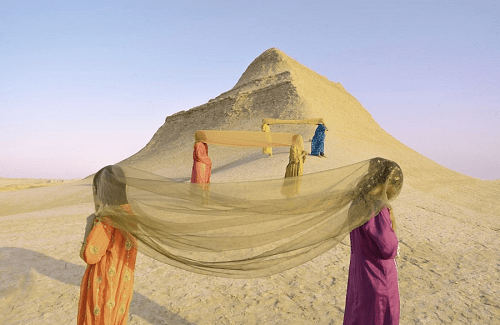

styling; Storytelling campaign challenge
Considering the gaps in the products, narrative, photography and styling of the campaign, one of the criticisms was that the presence of the stylist in this campaign was weak and because of this, there is no proper coherence between the different parts of the campaign. To what extent was the successful outcome of entrusting the photography of this campaign to the documentary photographer? Has the photographer been able to do the fashion photography well in addition to the documentary photography of this campaign? Elika Shahvardi replied: “The purpose of choosing documentary photography is that we did not want the story to be told through the eyes of the models, because it was clear that the eyes should be native and local.” The stylist was present in this campaign and ironically faced many challenges to show the clothes. A piece of the Zar collection that was in the hands of the models was considered as a kind of totem that they carry with them and remind them of the story of Zar. Like a piece that you have to carry with you after the Zar ceremony when you become a fan of Hawa, and this is inseparable from the heart of style.
According to many people, the use of indigenous models is a good way to avoid accusations of manipulation and cultural appropriation. But in this collection, it has taken a different form. Dersa is represented in the entire southern region of the country only in the city of Ahvaz, and the people of Hormozgan have not been included in the audience that can touch Dersa products as seen in the hands of the models and buy them. How does the use of indigenous models and traditional clothes fit with the products that Darsa has emphasized many times on its modern identity? This issue is not even compatible with the identity that Darsa has created for himself. After the rebrand, Darsa constantly emphasizes the keywords bold, modern, future, future lifestyle, etc., features that have been shown many times in Darsa’s previous designs with sharp forms and geometric and angular compositions. But Darsa has gone to the popular culture, traditions and native clothing in the story campaign; Popular culture, which is traditional, native, uniform and soft in its heart. The contrast between the two shows itself many times in the campaign as a whole and in the photos.
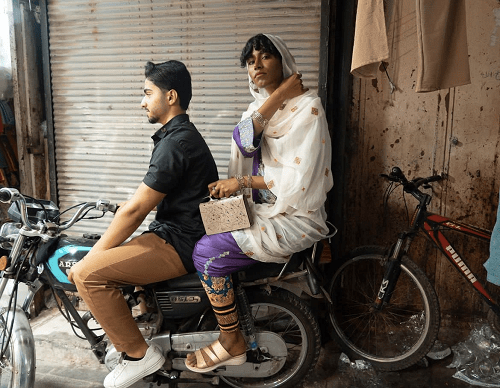

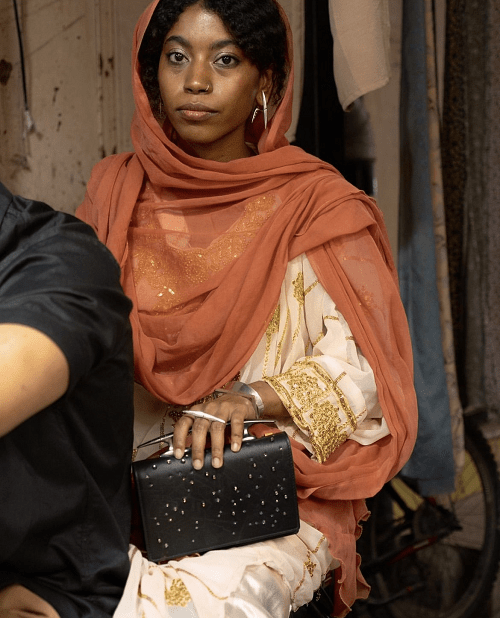

Vacancy of research in the clothing and fashion industry of Iran
About the formation of the idea of this campaign, Dersa’s art director mentions the ten-day stay of the Dersa design team in Qeshm, which happened two years ago. After that, with the help of written sources, documentaries and questions from native people of the region, the narrative of the Zar campaign is formed. If there is not enough research on a topic, questioning people and field research should be done with documented research methods to reduce the possibility of error, personal manipulation and bias. In such cultural and indigenous issues, ethnographic research methods are suggested, which are generally done with observation, interview and description along with participation in the life of the studied community. With this method, you can get a detailed and comprehensive description of a livelihood, social, family, religious, political, rituals and ceremonies, beliefs and beliefs, art, oral literature and other matters and details and aspects of the life of a people or a group of people. . If there are such studies about the ritual of Zar, it is necessary to cite them in the narration and separate the narration from personal reading, and if there is none, one cannot rely on scattered conversations with people – even if they are in large numbers. Individuals’ personal experiences are very important in ethnographic research, but these experiences must be carefully examined to avoid errors and biases. This issue shows the necessity of the presence of researchers in the field of sociology, cultural studies and art in brands more than ever. Different cultures and rituals have a very high potential to create new narratives and inspirations in brands, but the way of approaching and using these cultural rituals is very sensitive and carries with it the risk of cultural appropriation and negative impact on that culture.
last word
There were other questions about the campaign that were omitted due to time constraints. For example, the timing of the unveiling of this campaign is still questionable, because Darsa introduced the Dostanzar campaign immediately after the unveiling of its collaboration with Arin Hakimi. But what is wrong with the sentence you said, tell me the art too! Darsa, as an Iranian brand that deals with product design along with creating new values, deserves attention. Criticizing an issue shows its value, importance and influence in the society, and starting a path that no one has stepped on, requires extra courage and strength. Opening the space for criticism in Iran’s clothing and fashion industry is very valuable, and Darsa is a brand that is not afraid of criticism and welcomes it. It is hoped that such questions and criticisms will help to improve the design and narrative atmosphere of Iranian brands.
RCO NEWS















